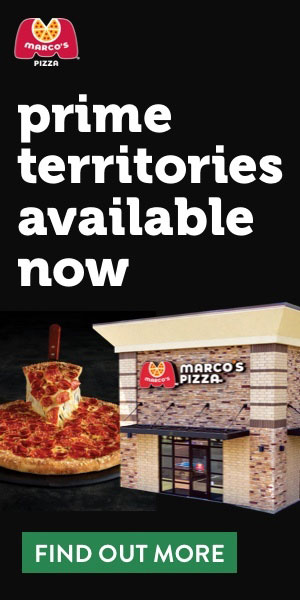How To Sustain Your Business Growth So You Can Exit Successfully
Robert came to us to help him develop a 5-year Transition Growth Plan so he could sell his company and retire. He had high expectations for what the sale would net him financially, based on his presumed growth rate. Unfortunately, his presumptions were well beyond business reality. He had never utilized a written strategic growth plan or a business model innovation program. And the stagnant state of affairs which made up his company were proof of this.
The Next Step Program identifies the top 12 principal reasons which have caused business owner transitions and exits to be unsuccessful. Each of these reasons impacts the company's ongoing annual profitability as well as an owner's transition and future exit results. This article addresses the 7th of these 12 reasons:
- Reason #7. Nonsustainable Business Growth. Your company lacks an effective transition period Strategic Growth Plan and Continuous Business Model Innovation Program for sustaining continued product and service innovation, brand recognition, customer engagement, business growth and profitability, all of which impacts your company's present growth and survival, and therefore your future exit pricing and feasibility.
In order to grow your business, it's critical that you take the following two actions:
- Adopt A Continuous Business Model Innovation Program
- Document A Transition Period Growth Strategy
There is a lot of misunderstanding as to what exactly is a business model. A company's business model represents the business logic, at the strategic level, by which a company operates to make a profit. It is a representation of how a company makes (or would intend to make) money.
In order to visualize this conceptually, the informal descriptions of business models can be formalized into building blocks relationships. Many different conceptualizations have been developed in the business literature. An example is the business research study by Dr. Alexander Osterwalder: The Business Model Ontology - A Proposition In A Design Science Approach (2004).
The business model choices you make in operating your business will cause the success or failure of your enterprise. The 2006 and 2008 IBM Global CEO Studies demonstrate that CEOs believe that business model innovation is becoming the new strategic differentiator. These studies found that companies which focus on business model innovation outperform companies which focus on operations in terms of operating margin growth.
The objective after you have described your business model is to continuously improve it. This can occur at each layer of the company. This can be at the overall company level, the business line level, or for a particular product or service.
Your business model components can be described as follows:
- Value Offer. The overall view of the bundle of products and services I offer.
- Key Activities. The arrangement of the activities and resources I use to make and provide my products and services.
- Partner Networks. The outside partners and alliances that help me make or sell my products or services.
- Core Resources. The principal or unique repeatable capabilities I have for creating value for my customers.
- Cost Structures. The sum of the monetary approaches and cost methods I use to run my business model.
- Customer Relationships. How I keep what I make in sync with what my target customers want or need.
- Target Customers. The customers I want to offer value to.
- Distribution Channels. The means by which I deliver products and services to customers (including marketing and distribution strategies).
- Revenue Streams. The various ways I price what my customers must pay for what I sell.
There are three ways to innovate a business model.
- Change the business model. By doing similar things differently. This means offering similar value propositions in an entirely new fashion. Skype is an example. It offers a value proposition that is very similar to phone companies: phone calls. However, its business model allows it to use the Internet as a free telecom infrastructure/network. This has extremely low variable costs and enables it to reach customers worldwide. Its business model offers the same thing, but differently because it uses different resources, needs different competencies, and uses different distribution channels.
- Extend the business model. This means building on the current business model building blocks by adding new ones. An example is where competing telecom and cable industries aim at offering mobile and fixed communication, Internet broadband, and TV all in one package.
- Create a new business model. This occurs when an entirely new business model is created when new markets emerge. Downloading ring-tones for mobile phones is an example. This illustrates what can happen when entrepreneurs find ways of exploiting new technologies and trends.
Fortune Magazine recently reported (October 2, 2006) that "business models are living much shorter lives these days."
By continuously looking to evaluate and improve your business model components, you can significantly improve your chances of continuous profitability and success.
Why would anyone want to buy your company? More specifically, why would anyone want to buy your company at the price you are asking?
The answer tends to consistently be very straightforward. Most buyers are interested in acquiring a company if they have a relatively high degree of certainty that the company will produce steady, fairly predictable, growing net cash flow. The "present value" of future cash flow is typically the best way to develop a price for a business. Essentially, a buyer's willingness to pay your price depends on your ability to deliver to the buyer a basket of tangible and intangible assets which function together like a well-oiled piece of machinery to produce this steady, predictable, and growing cash flow.
One of the best ways to demonstrate your financial fitness to a buyer is to have a well-constructed Strategic Growth Plan for achieving profitable growth into the future (and for achieving it without you). Like a good business plan, a strategic plan for future growth should demonstrate your place in your industry and your industry's place in the overall economic momentum. In essence, you need to demonstrate that you can grow.
To the extent that you have developed a well-stated, well-constructed business model and strategic plan to demonstrate exactly how you intend to sustain the vitality and growth of your company, your ability to sell your business, your ability to attract a quality buyer, and your ability to achieve your asking price are all enhanced.
The Next Step Transition Growth and Exit Planning program has been specifically designed to address and overcome each of the 12 principal reasons for failure. This program consists of 12 critical building blocks. We are using this program to help business owners design and implement their Transition Growth Plans for accomplishing their transitions and exits successfully.
Nicholas K. Niemann, Esq., is a transition and exit planning advisor and a partner in the law firm of McGrath North. The firm's website is www.McGrathNorth.com.
Andrew D. Horowitz, CPhD, is a wealth advisor and president of The Estate Management Group. The firm's website is www.EMGPlanning.com.
Share this Feature
Recommended Reading:
| ADVERTISE | SPONSORED CONTENT |
FRANCHISE TOPICS
- Multi-Unit Franchising
- Get Started in Franchising
- Franchise Growth
- Franchise Operations
- Open New Units
- Franchise Leadership
- Franchise Marketing
- Technology
- Franchise Law
- Franchise Awards
- Franchise Rankings
- Franchise Trends
- Franchise Development
- Featured Franchise Stories
| ADVERTISE | SPONSORED CONTENT |

$500,000





 The multi-unit franchise opportunities listed above are not related to or endorsed by Multi-Unit Franchisee or Franchise Update Media Group. We are not engaged in, supporting, or endorsing any specific franchise, business opportunity, company or individual. No statement in this site is to be construed as a recommendation. We encourage prospective franchise buyers to perform extensive due diligence when considering a franchise opportunity.
The multi-unit franchise opportunities listed above are not related to or endorsed by Multi-Unit Franchisee or Franchise Update Media Group. We are not engaged in, supporting, or endorsing any specific franchise, business opportunity, company or individual. No statement in this site is to be construed as a recommendation. We encourage prospective franchise buyers to perform extensive due diligence when considering a franchise opportunity.